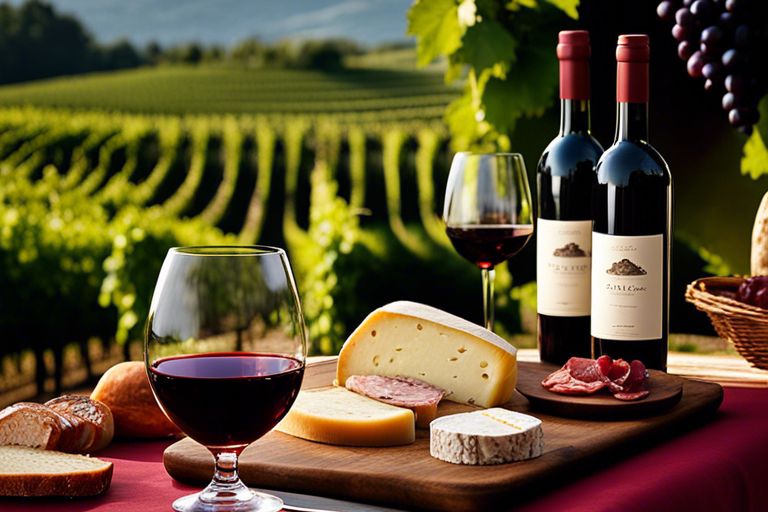
Embark on a journey into the world of Italian red wines with our comprehensive guide to Barbera. As one of Italy’s most beloved grape varietals, Barbera boasts a rich history and distinctive characteristics that set it apart from other wines. From its origins in the Piedmont region to its versatile flavour profile, we examine into the secrets that make Barbera a unique and intriguing choice for wine enthusiasts. Whether you’re a seasoned oenophile or a newcomer to the world of wine, this guide will equip you with the knowledge and insights needed to appreciate the complexities of Barbera and unlock its full potential. Join us as we uncork the mysteries of Barbera and discover why this Italian red wine continues to captivate the palates of connoisseurs around the globe.
Exploring the Types of Barbera Wine
- Barbera d’Asti
- Barbera d’Alba
- Other Regional Variations
Barbera d’Asti
Barbera d’Asti is a vibrant and fruity red wine from the Asti region in Piedmont, Italy. Known for its deep ruby red colour, high acidity, and notes of black cherry and raspberry, Barbera d’Asti is a versatile wine that pairs well with a variety of dishes, from pasta to grilled meats.
Barbera d’Alba
Barbera d’Alba is another popular expression of Barbera, originating from the Alba region in Piedmont. This wine tends to be more complex and full-bodied compared to Barbera d’Asti, with flavours of dark fruit, spice, and a hint of oak. Barbera d’Alba is often aged in oak barrels to enhance its structure and complexity.
Other Regional Variations of Barbera wine can be found in different parts of Italy, each offering a unique take on this beloved grape. From Barbera del Monferrato to Barbera del Monferrato Superiore, these regional variations showcase the diversity and versatility of Barbera, highlighting different terroirs and winemaking traditions. Exploring these variations can provide a deeper understanding of the characteristics and potential of Barbera wine.
Step-by-Step Guide to Selecting a Barbera
A good Barbera can be the perfect addition to any wine collection, but selecting the right one can be a daunting task. To make the process easier, let’s break it down into key factors to consider and handy tips to navigate the selection process.
Factors to Consider
| Vintage | Ensure you check the vintage of the Barbera as this can greatly impact the quality and taste of the wine. |
| Price Range | Set a budget beforehand to narrow down your options and make the selection process more manageable. |
- Check reviews from reputable sources to gauge the quality of the wine.
- Consider the food pairing options for the Barbera you are interested in.
- Assume that older vintages may require decanting before serving.
Tips for Navigating the Selection Process
When faced with a wide selection of Barbera wines, it’s important to have a strategy in place to find the perfect bottle for your taste preferences. Look for guidance from knowledgeable staff at wine shops or seek recommendations from friends who are wine enthusiasts.
- Don’t be afraid to ask for recommendations based on your preferences.
- After narrowing down your options, consider purchasing a small sample or tasting before committing to a full bottle.
- After making your selection, take notes on your experience to remember what you liked for future purchases.
Enjoying Barbera: Tips and Best Practices
Food Pairing Ideas
Barbera is a versatile wine that pairs well with a variety of dishes. For a classic match, try pairing Barbera with Italian favourites such as pasta with tomato-based sauces, pizza, and hard cheeses. The wine’s high acidity and medium body make it a great complement to rich, hearty dishes like braised meats and stews. Don’t be afraid to experiment with different pairings to find the perfect match for your palate.
Serving and Storage Tips
When serving Barbera, it is recommended to chill it slightly, around 14-16 degrees Celsius, to bring out its vibrant fruit flavours. Use a large-bowled wine glass to allow the wine to aerate and fully express its aromas. To store Barbera, keep the bottle in a cool, dark place away from sunlight and temperature fluctuations. An ideal storage temperature is around 12-14 degrees Celsius, and once opened, the wine can be enjoyed within a few days.
- Knowing the ideal serving temperature for Barbera can enhance your tasting experience.
Pros and Cons of Barbera Red Wine
Advantages of Barbera Wines
| Pros | Cons |
| 1. Versatile food pairing options | |
| 2. High acidity for a refreshing taste | |
| 3. Approachable price points | |
| 4. Soft tannins for smooth drinking |
Potential Drawbacks to Be Aware Of
| Pros | Cons |
| 1. Can lack complexity compared to other red wines | |
| 2. Limited ageing potential |
While Barbera wines offer a range of advantages such as their versatility in food pairing and refreshing acidity, it is important to be aware of potential drawbacks. These include a tendency for some Barbera wines to lack the depth and complexity found in other red wines, as well as a limited ageing potential. Understanding these factors can help you appreciate and enjoy Barbera wines to their fullest potential.
Unlock The Secrets Of Barbera – A Guide To This Italian Red Wine
In brief, Barbera is a versatile Italian red wine with a long history and unique characteristics that make it a hidden gem waiting to be discovered. Its high acidity, low tannins, and vibrant fruit flavours make it a perfect companion for a wide range of dishes, from rich pasta dishes to hearty meats. By understanding the secrets of Barbera and its different styles, regions, and production methods, wine enthusiasts can truly appreciate the beauty and complexity of this underrated wine. So next time you’re looking for a quality red wine to pair with your meal, consider unlocking the secrets of Barbera for a delightful and authentic Italian wine experience.